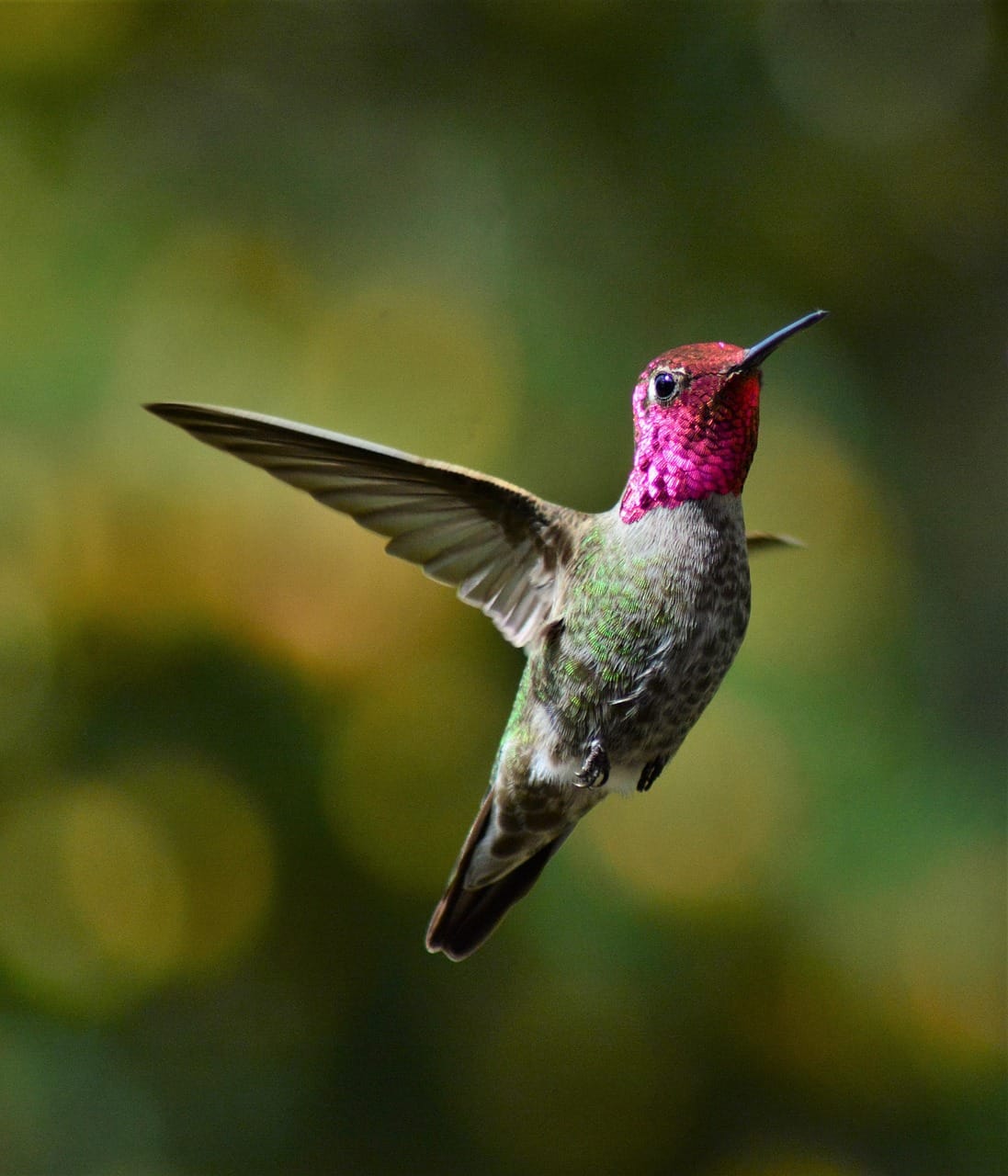Feeders lead hummingbirds by the beak
Backyard hummingbird feeders present an environmental shift and an opportunity for species change through natural selection.

Years ago, we put together a home-made hummingbird feeder. It had three parts: a clear glass bottle, a laboratory cork with a hole in it, and a short piece of bent stainless-steel tubing. We dutifully filled it with sugar water, put it out on the lawn on a one-metre stake, and peeked around the kitchen curtains to watch the hummingbirds.
Today's feeders are much fancier, but this one seemed to work well. We quickly saw a few hummingbirds drinking, and felt great when the fluid disappeared. We were helping the hummingbirds!
Before long, we were filling the bottle three times a day. We were really helping the hummingbirds.
That was when we saw our dog at the feeder, holding out her tongue on the tip of the tube. She drank a whole bottle of hummingbird food while we watched.
We raised the feeder so the dog couldn't reach it, and wondered at the tolerance of the hummingbirds—who were still visiting the feeder to drink—for dog spit.
Feeders have a powerful appeal for hummingbirds, whose iridescent beauty, aerobatic flying, and surprising competitiveness are constantly entertaining.
The study looked at Anna's Hummingbirds, which winter along the west coast of North America as far north as central Vancouver Island in Canada. The study cleverly uses census data as a way to judge human population density, advertising and sales of feeders as a proxy for feeder density, and a 2D and 3D analysis of years of museum specimens of hummingbirds to characterize avian anatomy over time.
The researchers incorporated this work into a model that maps human and natural food sources against physical characteristics of the birds. As feeders proliferated, hummingbird beaks got longer and larger, presumably to take advantage of the feeders. But because hummingbird beaks are also thermoregulation devices, birds in colder environments have smaller and shorter beaks to conserve heat. And where feeders are most dense, male hummingbird beaks evolved to be sharper and more-effective weapons, presumably to aid competition at the feeder.
Like Darwin's finches, diversity in hummingbirds emerges rapidly, in just a few generations. But in this case, environmental differences caused by humans have caused physical changes through selective pressure.
As far as we know, though, it's not going to help overweight dogs all that much.
- Alexandre, Nicolas M., Faye Romero, Eliza Grames, Alejandro Rico-Guevara, and CJ Battey. 2025. “Rapid Morphological Evolution of Anna’s Hummingbird (Calypte anna) in Response to Human-Mediated Ecological Changes.” Global Change Biology 31 (5): e17345. https://doi.org/10.1111/gcb.17345.
- Pennisi, Elizabeth. 2025. “Feeders Are Driving Hummingbirds to Evolve Longer Beaks.” Science, May 29, 2025. https://www.science.org/content/article/feeders-are-driving-hummingbirds-evolve-longer-beaks.
